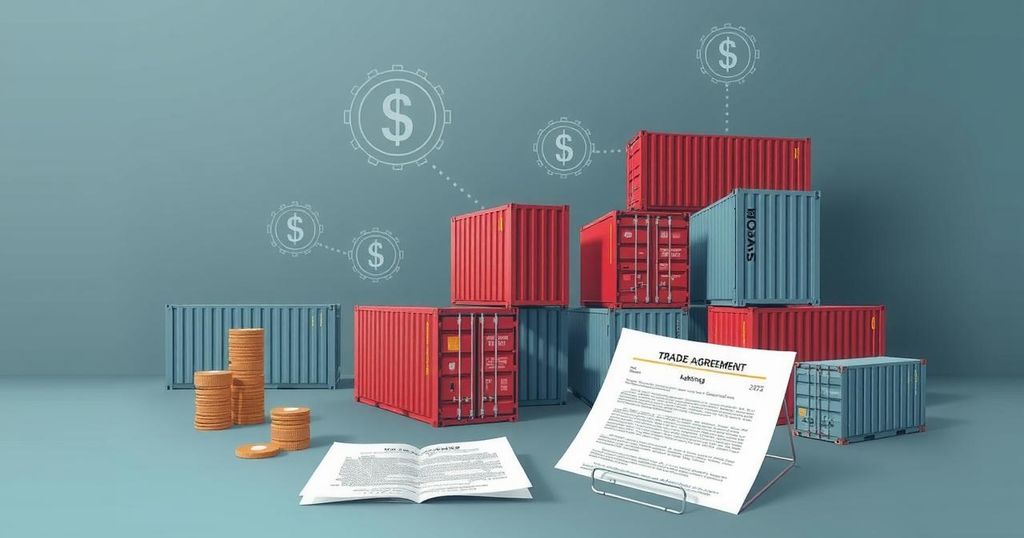Trump’s Vietnam Trade Deal Suggests Future Limits on Chinese Tariffs

- Trump’s Vietnam trade deal indicates possible future tariff levels for China.
- New tariffs of 20% on Vietnamese exports target Chinese export escape routes.
- The 40% tariff on transshipped goods reveals limits on reducing China tariffs.
- China’s cooperation is essential, especially on topics like rare earths.
- Trade negotiations with the US could redefine competitive landscapes in Asia.
Vietnam Deal Signals Future China Tariff Levels
Heightened trade tensions between the United States and China continue although President Donald Trump’s recently established trade deal with Vietnam sheds light on the future landscape of tariffs affecting Chinese goods. The implications of this agreement seem clear, particularly as the current tariffs on Chinese imports rest at about 55 percent, a number estimated to hold steady through the upcoming month of August. With this Vietnam deal, the US is also implementing a 20 percent tariff on Vietnamese exports and an aggressive 40 percent on goods that are transshipped, an approach many consider crucial for curtailing evasion of tariffs by Chinese exporters since the commencement of the trade wars.
Future Trade Negotiations and Expectations
This action taken by the Trump administration demonstrates an intent to establish a baseline for future negotiations with China. The 40 percent tariff on the transshipped goods is particularly notable, implying that reductions in tariffs on Chinese products, should they occur, are likely to remain above this threshold, thus limiting competition. Gabriel Wildau, managing director at Teneo, a notable political risk consulting firm, offered insight into the administration’s perspective, stating, “The 40 percent figure in the Vietnam deal may reflect a broader conviction in the Trump administration about the appropriate tariff level on China,” while expressing skepticism about Trump’s commitment to a firm minimum tariff.
Goodwill Signs Amid Tariff Negotiations
In the meantime, recent developments indicate that both nations are staying true to the agreements hammered out in London last month, following the recent truce over trade. Various signals of goodwill are evident, like the lifting of certain US export licenses on chip design software and approval for ethane exports heading to China without excess scrutiny. During a Fox News interview, Treasury Secretary Scott Bessent noted the resumption of shipments of rare earth magnets—items crucial for technology and military applications, though their levels had yet to regain pre-curb quantities. Meanwhile, Liu Jianchao from the Communist Party has stated a positive view on future Sino-American relations, which reflects Beijing’s interest in maintaining an advantageous relationship with the US.
Broader Implications for International Trade
However, this evolving situation complicates matters not just for China and the US but also for Vietnam and other nations. The Trump administration’s efforts to create trade agreements across the Asia and Europe region—especially with stringent terms on Chinese components—pose a significant concern for Beijing. Should this deal with Vietnam foster an environment where Chinese firms face higher tariffs than their competitors, it could prompt drastic changes in competitive strategies. As such, the Chinese government is already assessing its response to possible retaliatory tariffs as the deadline nears for the implementation of additional US tariffs set for July 9.
Assessing Future Trade Dynamics And Responses
Furthermore, while discussions continue, the Chinese Ministry of Commerce has made it clear they will seek to protect their interests if the outcomes of negotiations favor partners at China’s expense. He Yongqian, the ministry’s spokesperson, stressed that China would respond decisively to any trade deal that undermines its legitimate rights. However, experts like Stephen Olson remind us that the stakes between the two nations are profoundly different than those of other deals, like that with Vietnam, hinting that any miscalculation in these negotiations could lead to significant geopolitical repercussions. The ongoing evaluations are critical to understanding how far negotiations might go and what compromises are realistically achievable between the US and China.
As the trade negotiations unfold, the recently established Vietnam deal signifies potential tariff ceilings for Chinese goods, complicating the negotiation landscape between the US and China. The intent of the Trump administration appears to be centered on maintaining or even increasing tariff floors despite the ongoing engagements. With ongoing tariffs and a looming US deadline, it will be crucial for both nations—and particularly China—to navigate their responses cautiously while considering the wider implications across the Asia-Pacific trade dynamics.








